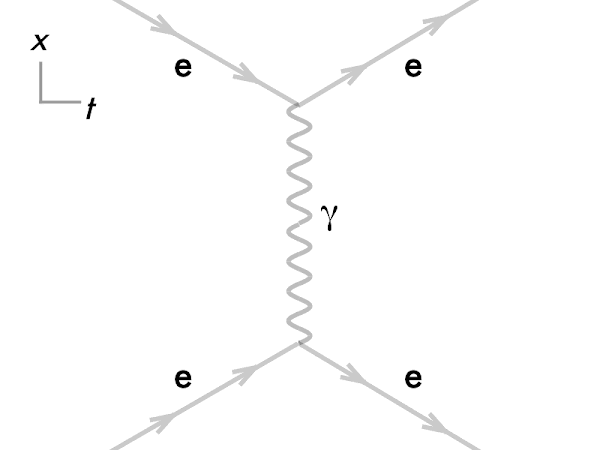Cuesta College, San Luis Obispo, CA
Students have a weekly online reading assignment (hosted by SurveyMonkey.com), where they answer questions based on reading their textbook, material covered in previous lectures, opinion questions, and/or asking (anonymous) questions or making (anonymous) comments. Full credit is given for completing the online reading assignment before next week's lecture, regardless if whether their answers are correct/incorrect. Selected results/questions/comments are addressed by the instructor at the start of the following lecture.
The following questions were asked on reading presentations Feynman diagrams (Phillip "Flip" Tanedo, Cornell University/USLHC Collaboration) and quantum electrodynamics (QED) (Christopher "Bot" Skilbeck, cronodon.com).

Ralph Leighton
http://www.symmetrymagazine.org/article/may-2014/saving-the-feynman-van
Selected/edited responses are given below.
Describe what you understand from the assigned textbook reading or presentation preview. Your description (2-3 sentences) should specifically demonstrate your level of understanding.
"Skimmed through Feyman's diagrams which were still very confusing. From Quantum Electrodynamics I understood that in a system of time and energy, a system can interchange both energy and time such that if it borrows a large quantity of energy, it will have a small duration and if it has a small amount of energy it can last long."
"QED is the communication between mediated particles by virtual photons that is electrically charged, it's a theory of the electromagnetic interaction. Fundamental force have electromagnetic, strong, weak, and gravity that have different ranges and strength."
"I understand about as much as I did after the last lesson. I follow the lines and that's about it."
"Two electrons may repel each other by emitting a photon. The equation given for energy of particle includes the speed of light constant, particle, mass and momentum, which is zero when it is at rest."
"A proton (+) exchanges photons with a electron (-), producing the Coulomb force of electrostatic attraction. Nuclear force between protons and neutrons keep the nucleus together. The quantum field theory says that forces between particles are created by the exchange of virtual particles."
"At first, even Newton didn't understand that objects could act on each other at a distance. How can poor Physics 205B students be expected to understand what the great mind of Isaac Newton could not?"
"I understand that nuclear chemistry is the same as nuclear physics and that chemists don't like that."
"I understand that if a system creates a highly energetic virtual particle, the particle will be short lived. This is because nothing travels faster than light, so it must not travel as far."
Describe what you found confusing from the assigned textbook reading or presentation preview. Your description (2-3 sentences) should specifically identify the concept(s) that you do not understand.
"I don't understand how to figure out if the charge of photon is positive, negative or zero."
"I have no idea what these interactions represent or how it is relevant to what we are learning."
"I'm confused on what types of problems we are solving. What importance does this subject have overall?"
"I have a hard time figuring out what the whole picture means--when the symbols are put together basically telling a story."
"Pretty much everything"
"I was a bit confused on how to determine the charge of some of the intermediate particles such as bosons."
"Like usual the wordage is confusing, until you explain it in class. At the point it becomes so much clearer. I like it explained to me."

negative. ******** [8] zero. ************* [13] positive. ********** [10] (Unsure/guessing/lost/help!) ********** [10]

negative. ****** [6] zero. ******* [7] positive. ************** [14] (Unsure/guessing/lost/help!) ************** [14]

negative. ****** [6] zero. *********** [11] positive. *********** [11] (Unsure/guessing/lost/help!) ************* [13]
Ask the instructor an anonymous question, or make a comment. Selected questions/comments may be discussed in class.
"These look pretty easy once I get used to looking at them and studying them."
"I need an intervention like California needs a rainstorm."
"Definitely need lots of clarification on how to interpret the Feynman diagrams."
"Who would have thought a squiggle would make you seem smart?"
"Really need to kick butt on this last quiz and final. I can feel the glory of success in this class. I am understanding a lot more of the material in this class than last semester and let me tell you it feels damn good. :-)" (Oh, you bright and risen angel.)
No comments:
Post a Comment